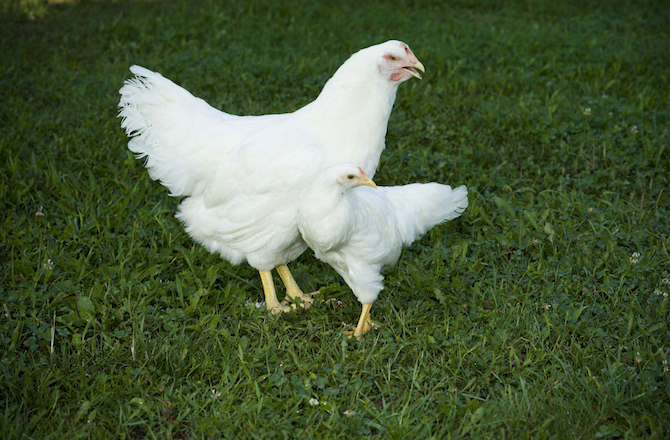
The study overturns the popular assumption that evolution is only visible over long time scales. The findings are published in the journal Biology Letters.
"Our observations reveal that evolution is always moving quickly, but we tend not to see it because we typically measure it over longer time periods," Greger Larson of Oxford University's Research Laboratory for Archaeology said in a press release.
"Our study shows that evolution can move much faster in the short term than we had believed from fossil-based estimates."
Larson and his team looked at a well-documented, 50-year pedigree of a population of white Plymouth Rock chickens developed at Virginia Tech by Paul Siegel. The researchers focused on reconstructing how the mitochondrial DNA passed from mothers to daughters within the chicken population.
To do this, they analyzed DNA from the blood samples of 12 chickens of the same generation using the most distantly related maternal lines. (The base population started from seven partially inbred lines.) A selective mating approach within the population started in 1957, with the goal of increasing the size of the chickens.
That effort was certainly successful, as the chickens now exhibit an over tenfold difference in size from their ancestors. This was noted after the chickens were weighed at 56 days old.
"Previously, estimates put the rate of change in a mitochondrial genome at about 2 percent per million years," Larson said. "At this pace, we should not have been able to spot a single mutation in just 50 years, but, in fact, we spotted two."
The two mutations occurred in the mitochondrial genomes of the birds in only 50 years. Moreover, the team additionally discovered a single instance of mitochondrial DNA being passed down from a father. This is a surprising discovery, showing that the phenomenon known as "paternal leakage" is not as rare as previously believed.
Lead author Michelle Alexander from the University of York said, "The one thing everyone knew about mitochondria is that it is almost exclusively passed down the maternal line, but we identified chicks who inherited their mitochondria from their father, meaning so-called 'paternal leakage' can happen in avian populations."
"Both of these findings demonstrate the speed and dynamism of evolution when observed over short time periods."



If evolution happens quicker than expected, how about devolution - do we lose the capacity after a few generations of not using an ability?